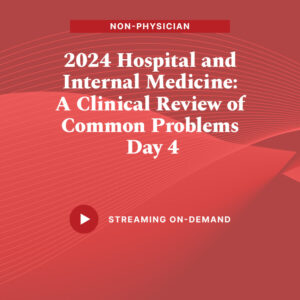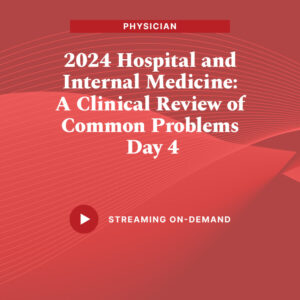Title: Internal Medicine – EKG: AVRT (Atrioventricular Reentrant Tachycardia); Ischemia; ECG Interpretation Practice
Faculty: Jerry W. Jones, M.D., F.A.C.E.P., F.A.A.E.M.
Original Release Date: July 1, 2019 Expiration Date: July 1, 2022
Topic 1: Pre-excitation and AVRT (Atrioventricular Reentrant Tachycardia)
Upon completion of this session, the participant should be able to: COMP
- Detect positive and negative delta waves
- Differentiate between a “by-stander” accessory pathway and a “circus movement” dysrhythmia
- Differentiate between an AVNRT and an AVRT
- Relate the inherent dangers of an accessory pathway
TOPIC 2: Ischemia: Subendocardial, Epicardial, Hyperacute T’s, Jones’s Sign (Jones’s Rule)
Upon completion of this session, the participant should be able to: COMP
- Differentiate between subendocardial ischemia and epicardial ischemia.
- Analyze a 12-lead ECG for the earliest signs of myocardial ischemia.
- Detect “Jones’s Sign” and assess minimal ST changes as possible early signs of ischemia.
- Distinguish between inferior, anteroseptal (anteroapical), anterolateral and posterolateral epicardial ischemias.
TOPIC 3: ECG Interpretation Practice.
Upon completion of this session, the participant should be able to: GL, COMP
- Demonstrate the ability to utilize the Methodical Approach to 12-lead ECG interpretation while incorporating the “Three Main Causes” approach to assessing any abnormalities encountered during the interpretation
- Demonstrate the ability to recognize the different forms of AV block and to differentiate 3rd degree AV block from simple AV dissociation
- Specify the classic morphological features of left and right bundle branch block and the importance of the repolarization abnormality
- Recognize the main categories of subendocardial and acute epicardial ischemia
- Relate the importance and use of reciprocal changes in diagnosing acute epicardial ischemia
- The receipt for any incentive-associated purchase will designate the value of the gift card separately from the cost of the learning activity.
- This incentive may have implications on your tax reporting obligations. Any reimbursed amount must be declared as personal income for tax purposes.



